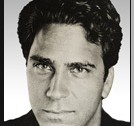Cheesecakes Through History
This article was written by Phin Upham
Cheesecake is the prime example of the ingenuity and stubbornness of humans, especially as it pertains to great tasting food. The Romans called it “libum” and often cooked it as a sacrificial offering to the spirits of the home. Most ancient Roman writers wrote of cheesecake served with honey, but Cato had a recipe for warm cheesecake that is delicious and savory. Even the appearance of the finished cake, with its golden rimmed crust, looks much like the cheesecake we know of today.
German influence brought the cheesecake to Philadelphia. Both the English and the Germans congregated at a restaurant called The Cheesecake House. The restaurant was like a sacred place, situated near a paradise garden of cherry and apple trees. The place had disappeared by 1848, but it was still fondly remembered in newspapers of the time. Something akin to an obituary for great food.
New York cheesecake is a popular variety developed in upstate New York. Today’s cheesecake is an offshoot of a traditional Italian recipe. It called for cottage cheese curds, or might sometimes use ricotta. This ricotta version is actually based off of an old Roman recipe, which used honey and a softer cheese devoid of salt. New York cheesecake came about as an accident, when William Lawrence of Chester, NY accidentally created cream cheese while trying to replicate French Neufchatel. This cheese was later re-created by a dairyman living in Edmeston, NY for the Empire Cheese Company, and re-branded as Philadelphia Cream Cheese. The existence of American cheesecake would be literally impossible without this accidental development.


Leave a Reply
You must be logged in to post a comment.